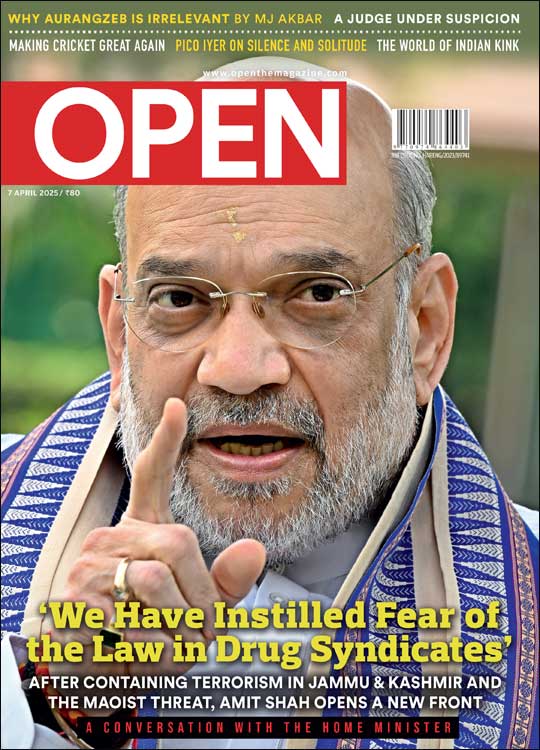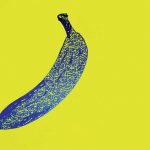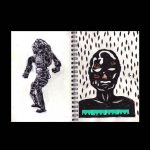The World according to a Cat Lover
The fate of both peasants and animals in Ramkinkar Baij’s art is a record of change in a post-industrial world
 Trisha Gupta
Trisha Gupta
 Trisha Gupta
|
31 Mar, 2012
Trisha Gupta
|
31 Mar, 2012
/wp-content/uploads/2015/11/baijlead.jpg)
The fate of both peasants and animals in Ramkinkar Baij’s art is a record of change in a post-industrial world
Walking through the seemingly interminable galleries that house the Ramkinkar Baij retrospective, I overhear a conversation between two stylishly turned out women who appear to have made a Thursday afternoon trip to the NGMA gift shop and walked into the exhibition as an afterthought. “No, no, this can’t still be the same artist,” says Woman 1, puzzled. “Arrey, but see his name is here, Ram Kinkar. Same guy who has done those sculptures, yaar,” says Lady 2. “But these watercolours of his are very pretty,” says the first lady in some surprise.
For the unwarned visitor, Ramkinkar Baij’s ouevre is indeed bafflingly uncategorisable. He sculpted, he painted, he sketched. He worked in watercolour, in oils and in pen and ink. Also in bronze, terracotta, plaster of paris and what looks like rough-hewn stone but turns out to be concrete. He was famous for throwing cement mortar and laterite pebbles directly onto a frame, creating larger-than-life sculptures so huge, so rugged that they seem almost like natural occurrences—but he also did delicate little sketches, barely a few centimetres square. If you happen to walk around with a canon of Western art in your head, you will find Baij images that look distinctly Cubist and others whose round fleshy bodies might remind you of Matisse. There are rooms full of paintings that could be called ‘pretty’, and other rooms that provide a glimpse of his more elemental work, usually in sculpture.
The changeability of his ouevre seems to echo the changeability of the man himself—at least as far as he is revealed to us in photographic portraits. There is the iconic image where he looks rather wildly out of the frame, his curly hair dishevelled, his torso bare—but there is also the gentle, almost drowsy old man of the (also iconic) image, ever so softly petting a cat on his lap. In an early photograph, we see him in Shillong with Binodini—his muse and long-time companion—almost foppish in a white kurta-pajama, a pristine shawl draped over his shoulders, hand perched on his hip in an attitude of studied insouciance. In others, we see a rather different Ramkinkar: clad in bush shirt and trousers, a deliberate departure, one presumes, from the kurtas, pajamas, dhotis that were de rigueur at Santiniketan. Then, in an image where he poses next to one of his more abstract sculptures, Speed, the plain, practical, artist-at-work quality of the shirt-and-trousers is all but erased by the flamboyant addition of sunglasses—and quite brilliantly, a conical straw hat. It is as if Ramkinkar assembled a ‘modern’ look, a half-joking challenge to anyone who might slot him as a peasant—and then, chuckling to himself, added the Chinese rice farmer hat.
The playful deliberateness of that Chinese straw hat—which he actually used quite often, whether he was wearing trousers and a shirt and teaching students at Visva Bharati, or wandering lungi-clad through the villages around Santiniketan, finding new things to make art out of—is of a piece with Ramkinkar’s approach to his art.
So, for example, in the footage he shot for a documentary about Ramkinkar, another great Bengali maverick modernist, the filmmaker Ritwik Ghatak, quizzes the artist about his famed sculpture Mill Call. Among the six gigantic outdoor pieces on the Visva Bharati University campus, Mill Call consists of two adult figures taking a giant stride forward, their muscular bodies stretched to capacity. But even as they seem to move ahead, with a child following close on their heels, one of them turns back, looking at something that’s flying out behind them. “What’s going on here, Kinkar da?” asks Ghatak. “These are coolies, they work in the rice mill,” says Ramkinkar. “They have heard the whistle and are running to work. But they have to go so early that their clothes aren’t dry yet. They dry their clothes while running to the mill.”
Looking at a massive photographic reproduction of Mill Call earlier at the NGMA (the original sculpture is immovable), I had seen those powerful arms held aloft and imagined them to be holding weapons, or tools of trade. To be told that they are clothes drying in the breeze is to suddenly encounter Baij’s incongruous laughter.
And yet Mill Call (1956), like its predecessor Santhal Family (1938), derives its iconicity precisely from Baij’s clear-eyed representation of a social transformation: of the local Santhal tribals from forest gatherers and agriculturists to factory hands. If the Santhal family is migrating with all its meagre belongings (and dog), the explanation Ramkinkar gave to Ghatak suggests that Mill Call, rather than being simply another innately heroic socialist image of the worker, stems from a recognition of how the rhythms of human life are irrevocably altered by industrial time. At one level it is a straightforward image about capitalism’s takeover of everyday time; at another, it is about hurtling into the future even as you look back at the past—blown irresistibly forward by the storm of progress, like Paul Klee’s Angel of History.
And it is not just the experience of time that is transformed with modernity, Ramkinkar seems to say, it is the human body, and sometimes, our way of seeing itself. With The Harvester (1943), he created a labouring body that was almost machine-like in its angularity and power. The natural gesture—of lifting up the scythe and bending backward to gain maximum momentum—is crystallised into an idealised form that is nearly abstract. In the painting Palm Grove (1960), he takes the bottom section of a grove of palm trees and creates from the criss-crossing trunks a vivid, almost geometrical image. Then there is his thoroughly abstract depiction of Spring, as also his two 1969 paintings At the Foot of the Arakan Hills and Atomica, which seem to owe a little too much to the style and imagery of Picasso’s Guernica.
And yet, the same Ramkinkar has also left behind a vast collection of paintings and sketches which seem very much to be drawn from life: deft little landscapes and portraits, in which we get a clear sense of light and colour and movement, bodies, gaits, even expressions. How are these seemingly contradictory styles to be explained? This “oscillating between representation and abstraction,” says Professor A Ramachandran on one of the exhibition’s explanatory plaques, “has been the characteristic of Kinkar da’s works.”
Certainly Ramkinkar’s early watercolours, starting in the 1940s, seem much less preoccupied with being conceptual than representational. His sense of colour is instinctive and always vivid, if often slapdash; his fluid, quick-drawn lines never fail to evoke a posture, a gesture, though also—almost unfailingly—a mood. Girls walking up a mountain path in Kullu, the only splash of red in a blue-green landscape, effortlessly communicate cheerfulness. His yellow-ghomta’d Standing Woman, one hand with palm open, almost in supplication, the other bent at an impossible angle, as if about to open the door and retreat out of our sight, seems uncomfortable, fretful.
Several other portraits are what might be called ethnographic, where the individual subject seems subsumed into a regional—and physical—type. Bhutia (1949), for example, is the very image of stolidity: a grizzled man swaddled in a coat or maybe two, his feet planted deliberately on the ground like tree trunks, as if he might keel over under his own weight. In stark contrast is Assam Tribesman (1950), a figure Ramkinkar chooses to etch in profile: his long lithe legs exposed under a colourful upper garment, the very picture of grace.
The largest group of works in this retrospective probably comprises Ramkinkar’s depictions of birds and animals. The relatively few sculpted creatures do not seem to aim for realism: like Horse, a wonderful piece in plaster where two human figures seem attached to the horse, so that all three together come across as a single living being, or the almost cartoonish, yet affectingly tender, terracotta Dog. The most famous of Ramkinkar’s sculpted animals are at the exhibition only in photographs, and these, too, in different ways, are not quite lifelike. The first of these is the massive dog that accompanies his Santhal family on their travels: an open-mouthed, snouty creature whose presence lends Ramkinkar’s vision of migration a mythical dimension—one thinks of Yudhishtira and the dog at the end of the Mahabharata. The second is his buffaloes, sculpted for a fountain outside a Santiniketan girls’ hostel. At first glance, the two animals at the base of the fountain seem like normal buffaloes, wallowing in shallow water, chewing the cud. The swishing tails of buffaloes shooing away flies on a hot summer day, are a common enough sight in India. But Ramkinkar’s playful gaze has turned them into fishtails. So the creatures we see are like hybrids out of Abol-Tabol—if Sukumar Ray imagined a half-duck-half-porcupine, haansh-jaru, these could be half-buffalo-half-fish, mosh-maachh.
But many more of Ramkinkar’s animals and birds are watercolours or pen-and-ink studies, and these are almost always ‘realistic’ renderings. Domesticated animals appear consistently: dogs, cats, horses, donkeys , pigs and most frequently cattle. A cow turning its head, a calf tied to a stake, buffaloes with people on their backs, bullocks ploughing a field: these are unsentimental portraits, the animals seem merely part of a rural landscape: creatures that are of interest only because they are integral to a peasant economy, not individuals in their own right. Then suddenly, amid all these working beasts, a gesture brings you up short: a woman in a field, petting a cow.
In a marvellous essay called ‘Why Look at Animals’, John Berger has written of how the advent of modernity has transformed our relationship with animals. The internal combustion engine displaced draught animals in streets and factories, while expanding cities transformed more and more of the surrounding countryside into suburbs ‘where field animals, wild or domesticated, became rare’. As animals disappear from daily life, they become less and less real to us; they are no longer creatures whose otherness we recognise. Families of all classes earlier kept animals because they served a domestic purpose—guard dogs, hunting dogs, mice-killing cats, and so on, but as Berger points out, ‘the practice of keeping animals regardless of their usefulness, the keeping, exactly, of pets… is a modern innovation’. As pets, deprived of almost all other animal contact, they necessarily become ‘creatures of their owners’ way of life’. And the zoo, where most of us must now go to observe wild animals, exists as a monument to the impossibility of any real encounter between animals and us.
R Siva Kumar has suggested that Ramkinkar saw animals through the intimate but unsentimental eyes of a peasant, whose ‘interaction with the animal world is more constant, he not only knows his animals better, but also experiences them as sentient beings without the least amount of romanticism’. But to me, Ramkinkar’s lifelong preoccupation with animals seems to stand on the threshold, forming a cusp between that older peasant world and an emerging modern world of pets and zoos. On the one hand he captured with lucidity the unremarkable sight of pigs and dogs and cattle wandering freely through his beloved Santhal villages; on the other, on a trip to Baroda, he seems to have spent most of his time in the zoo, sketching lions and monkeys and the hulking immobility of baboons. Most revealing of all are Ramkinkar’s many sketches of cats and kittens: Cat Family, Three Kittens, Three Cats. Unlike any of his other animals, they have personalities. In one famous image called Artist and his Models (Kittens), a lithograph from 1968, several large, unruly kittens with big expressive faces play a game of rough-and-tumble, dwarfing the artist, a rather crazed-looking black figure without a face. They have exaggerated facial expressions, almost like the anthropomorphic features of cartoon animals. They seem, in other words, like pets.
Towards the end of his magisterial essay, John Berger writes: ‘The marginalisation of animals is today being followed by the marginalisation and disposal of the only class who, throughout history, has remained familiar with animals and maintained the wisdom which accompanies that familiarity: the middle and small peasant.’ The fate of both animals and peasants in the art of Ramkinkar Baij is a record of the same inevitable trajectory—of disappearance and co-option in a post-industrial universe.
About The Author
CURRENT ISSUE
‘We Have Instilled Fear of the Law in Drug Syndicates,’ says Amit Shah
MOst Popular
4

/wp-content/uploads/2025/03/Cover_Amit-Shah.jpg)











More Columns
Why CSK Fans Are Angry With ‘Thala’ Dhoni Short Post
What’s Wrong With Brazil? Sudeep Paul
A Freebie With Limitations Madhavankutty Pillai